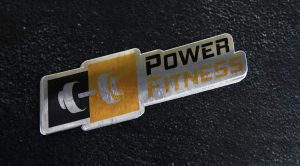If you’re a sports enthusiast, you’ve probably seen the iconic Nike swoosh logo on countless athletes and sports gear. The Nike logo is one of the most recognizable logos in the world, and it’s hard to imagine a time when it didn’t exist. But how did the Nike logo come to be, and what does it represent?
Nike’s logo has gone through several changes over the years, but the iconic swoosh has remained a constant since 1971. The logo was designed by Carolyn Davidson, a graphic design student at Portland State University, who was paid just $35 for her work. The swoosh was chosen because it represented movement and speed, which are key attributes in the world of sports. Today, the Nike logo is a symbol of quality, innovation, and athleticism, and it’s instantly recognizable all over the world.
Nike is one of the world’s leading sports brands, and its logo is a key part of its branding strategy. The company has built a strong brand identity around the swoosh logo, using it on everything from shoes and clothing to advertising and marketing materials. The Nike logo is a symbol of the company’s commitment to quality and innovation, and it has helped to establish Nike as a leader in the sports industry.
History of the Nike Logo
The Nike logo is one of the most recognizable logos in the world. It has become an iconic symbol of athleticism, speed, and quality in clothing design. The logo has undergone several changes over the years, but it has always maintained its simplicity and elegance. In this section, we will take a look at the history of the Nike logo and its evolution over time.
Blue Ribbon Sports Era
The Nike brand was originally known as Blue Ribbon Sports. It was founded by Phil Knight and Bill Bowerman in 1964. The company was a distributor for the Japanese shoe brand Onitsuka Tiger. However, in 1971, Blue Ribbon Sports decided to create its own line of shoes. This was the beginning of the Nike brand.
Creation of the Swoosh
In 1971, Phil Knight approached Carolyn Davidson, a graphic design student at Portland State University, to create a logo for his new shoe company. He gave her a brief to create a logo that was simple, memorable, and conveyed motion. Carolyn Davidson came up with several designs, but Knight was not satisfied with any of them. However, he eventually chose the Swoosh, which he felt represented motion and speed. Carolyn Davidson was paid $35 for her work.
Evolution of the Nike Logo
The Nike logo has undergone several changes over the years. The original Swoosh logo was designed in 1971 and was used until 1995. In 1985, the “Just Do It” slogan was added to the logo. In 1995, the logo was redesigned to the current version, which features a simpler Swoosh and the word “Nike” in bold letters.
Trademark and Copyright
The Nike logo is a registered trademark of Nike, Inc. It is protected by trademark and copyright laws in the United States and other countries. The logo cannot be used without permission from Nike, Inc.
Nike Logo Variations
Over the years, Nike has created several variations of its logo. These variations include different colors, shapes, and sizes. The most common colors used in the Nike logo are red, white, and blue.
Iconic Nike Logos
The Nike logo has become an iconic symbol of victory and success. It has been used in countless advertisements, commercials, and products. Some of the most iconic Nike logos include the Nike Cortez, Michael Jordan’s Jumpman logo, and the “Just Do It” slogan.
Nike Logo in Sports
Nike is one of the most popular brands in sports. The Nike logo can be seen on the uniforms of many athletes, including LeBron James, Kobe Bryant, Tiger Woods, and Roger Federer. Nike has also sponsored many sports teams over the years.
Nike Logo in Fashion
Nike has also become a popular brand in fashion. The Nike logo can be seen on many clothing items, including t-shirts, hoodies, and sneakers. The company has collaborated with several fashion designers over the years.
Nike Logo in Music and Entertainment
Nike has also been involved in music and entertainment. The Nike logo can be seen in many music videos and concerts. The company has also sponsored several music festivals and events.
Nike Logo Vs Competitors’ Logos
Nike’s logo is often compared to the logos of its competitors, such as Adidas and Asics. Nike’s logo is known for its simplicity and elegance, while Adidas’ logo is known for its three stripes. Asics’ logo features a stylized “A” that represents the company’s name.
In conclusion, the Nike logo has become an iconic symbol of victory, success, and athleticism. It has undergone several changes over the years, but it has always maintained its simplicity and elegance. The logo has become a part of popular culture and has been used in countless advertisements, commercials, and products.
Marietta Arnold is a branding and design enthusiast who draws inspiration from hobbies like hiking, photography, and art exploration. With a background in graphic design, she shares insights on branding strategies and logo design trends. Stay updated with Marietta’s work for the latest in branding and design.


